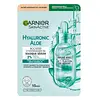What's inside
What's inside
 Key Ingredients
Key Ingredients

 Benefits
Benefits

 Concerns
Concerns

 Ingredients Side-by-side
Ingredients Side-by-side

Water
Skin ConditioningGlycerin
HumectantButylene Glycol
HumectantCaprylic/Capric Triglyceride
Masking1,2-Hexanediol
Skin ConditioningHydrogenated Lecithin
EmulsifyingPhytosteryl/Octyldodecyl Lauroyl Glutamate
Skin ConditioningCeramide NP
Skin ConditioningSodium Hyaluronate
HumectantButyrospermum Parkii Butter
Skin ConditioningMacadamia Integrifolia Seed Oil
Skin ConditioningCitrus Aurantium Bergamia Fruit Oil
MaskingPelargonium Graveolens Flower Oil
MaskingSalvia Officinalis Oil
MaskingPogostemon Cablin Leaf Oil
MaskingButylene Glycol Dicaprylate/Dicaprate
EmollientCetyl Ethylhexanoate
EmollientTrehalose
HumectantSorbitan Sesquioleate
EmulsifyingCetearyl Alcohol
EmollientCarbomer
Emulsion StabilisingAllantoin
Skin ConditioningTromethamine
BufferingGlyceryl Stearate
EmollientHydroxyethylcellulose
Emulsion StabilisingPolyacrylate-13
Polyisobutene
Polysorbate 20
EmulsifyingSorbitan Isostearate
EmulsifyingBiosaccharide Gum-1
HumectantEthylhexylglycerin
Skin ConditioningPolysorbate 60
EmulsifyingDisodium EDTA
Water, Glycerin, Butylene Glycol, Caprylic/Capric Triglyceride, 1,2-Hexanediol, Hydrogenated Lecithin, Phytosteryl/Octyldodecyl Lauroyl Glutamate, Ceramide NP, Sodium Hyaluronate, Butyrospermum Parkii Butter, Macadamia Integrifolia Seed Oil, Citrus Aurantium Bergamia Fruit Oil, Pelargonium Graveolens Flower Oil, Salvia Officinalis Oil, Pogostemon Cablin Leaf Oil, Butylene Glycol Dicaprylate/Dicaprate, Cetyl Ethylhexanoate, Trehalose, Sorbitan Sesquioleate, Cetearyl Alcohol, Carbomer, Allantoin, Tromethamine, Glyceryl Stearate, Hydroxyethylcellulose, Polyacrylate-13, Polyisobutene, Polysorbate 20, Sorbitan Isostearate, Biosaccharide Gum-1, Ethylhexylglycerin, Polysorbate 60, Disodium EDTA
Water
Skin ConditioningPropylene Glycol
HumectantGlycerin
HumectantAlcohol
AntimicrobialAloe Barbadensis Leaf Juice Powder
Skin ConditioningCitric Acid
BufferingDipotassium Glycyrrhizate
HumectantGlyceryl Acrylate/Acrylic Acid Copolymer
HumectantHamamelis Virginiana Leaf Water
AstringentHydrogenated Starch Hydrolysate
HumectantHydroxyacetophenone
AntioxidantHydroxyethylcellulose
Emulsion StabilisingLimonene
PerfumingMannose
HumectantP-Anisic Acid
MaskingPEG-40 Hydrogenated Castor Oil
EmulsifyingPhenoxyethanol
PreservativePotassium Hydroxide
BufferingPotassium Sorbate
PreservativePvm/Ma Copolymer
Emulsion StabilisingSodium Benzoate
MaskingSodium Hyaluronate
HumectantSorbic Acid
PreservativeXanthan Gum
EmulsifyingParfum
MaskingWater, Propylene Glycol, Glycerin, Alcohol, Aloe Barbadensis Leaf Juice Powder, Citric Acid, Dipotassium Glycyrrhizate, Glyceryl Acrylate/Acrylic Acid Copolymer, Hamamelis Virginiana Leaf Water, Hydrogenated Starch Hydrolysate, Hydroxyacetophenone, Hydroxyethylcellulose, Limonene, Mannose, P-Anisic Acid, PEG-40 Hydrogenated Castor Oil, Phenoxyethanol, Potassium Hydroxide, Potassium Sorbate, Pvm/Ma Copolymer, Sodium Benzoate, Sodium Hyaluronate, Sorbic Acid, Xanthan Gum, Parfum
 Reviews
Reviews

Ingredients Explained
These ingredients are found in both products.
Ingredients higher up in an ingredient list are typically present in a larger amount.
Glycerin is already naturally found in your skin. It helps moisturize and protect your skin.
A study from 2016 found glycerin to be more effective as a humectant than AHAs and hyaluronic acid.
As a humectant, it helps the skin stay hydrated by pulling moisture to your skin. The low molecular weight of glycerin allows it to pull moisture into the deeper layers of your skin.
Hydrated skin improves your skin barrier; Your skin barrier helps protect against irritants and bacteria.
Glycerin has also been found to have antimicrobial and antiviral properties. Due to these properties, glycerin is often used in wound and burn treatments.
In cosmetics, glycerin is usually derived from plants such as soybean or palm. However, it can also be sourced from animals, such as tallow or animal fat.
This ingredient is organic, colorless, odorless, and non-toxic.
Glycerin is the name for this ingredient in American English. British English uses Glycerol/Glycerine.
Learn more about GlycerinHydroxyethylcellulose is used to improve the texture of products. It is created from a chemical reaction involving ethylene oxide and alkali-cellulose. Cellulose is a sugar found in plant cell walls and help give plants structure.
This ingredient helps stabilize products by preventing ingredients from separating. It can also help thicken the texture of a product.
This ingredient can also be found in pill medicines to help our bodies digest other ingredients.
Learn more about HydroxyethylcelluloseSodium Hyaluronate is hyaluronic acid's salt form. It is commonly derived from the sodium salt of hyaluronic acid.
Like hyaluronic acid, it is great at holding water and acts as a humectant. This makes it a great skin hydrating ingredient.
Sodium Hyaluronate is naturally occurring in our bodies and is mostly found in eye fluid and joints.
These are some other common types of Hyaluronic Acid:
Learn more about Sodium HyaluronateWater. It's the most common cosmetic ingredient of all. You'll usually see it at the top of ingredient lists, meaning that it makes up the largest part of the product.
So why is it so popular? Water most often acts as a solvent - this means that it helps dissolve other ingredients into the formulation.
You'll also recognize water as that liquid we all need to stay alive. If you see this, drink a glass of water. Stay hydrated!
Learn more about Water